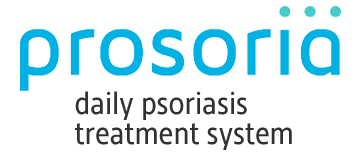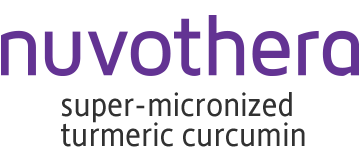
Psoriasis is the most prevalent immune-mediated disease in the country, affecting 7.5 million people. Psoriasis can show up anywhere on the body, but one of the most difficult to treat areas is the leg. When psoriasis symptoms appear on the leg, 90% of the time it is diagnosed as plaque psoriasis. Due to the characteristics of the epidermis of the lower extremities, skin around the leg region of the plaques acquires a dense structure. The thickness and severity of the plaques impact how long it takes to treat the leg area.
When psoriasis flares on your legs, some of the most common responses are "How long will this take to heal? When can I wear shorts again? Fortunately, many natural remedies and lifestyle choices can accelerate the healing of psoriasis flares on the legs and also help keep them from coming back.
What does Psoriasis on Legs Look Like
Plaque psoriasis, the most common type of psoriasis, has the following characteristics:
- Thick patches of red skin that looks similar to a rash
- The top of the patches of skin, known as plaques, have white, silver scales
- White or silver scales appear dry and can flake or fall off
- Plaque patches can occur in small, isolated groups or cover large portions of the body
- The dry crust can develop around the edges of the skin plaques
- The skin surrounding the plaques may appear red, inflamed, and irritated
Treating Plaque Psoriasis on Legs
Plaque psoriasis treatments aim to reduce overall inflammation and clear up the skin patches. Doctors can prescribe a wide range of treatment therapies depending on the stage of plaque psoriasis, many of which can be used in combination for optimal effect. Treatments are broken down into three different types: topical treatments, phototherapy, and systemic medication.
Topical Treatments
Topical treatments are often the first choice for most types of psoriasis. When used alone, topical creams and ointments can effectively reduce symptoms in mild to moderate plaque psoriasis. These include:
Prescription Topicals
- Topical corticosteroids – usually prescribed for milder forms of psoriasis to relieve itchiness and reduce overall inflammation.
- Synthetic vitamin D – helps slow down rapid skin growth.
- Topical retinoids – a derivative of vitamin A, this topical treatment helps shed away skin and reduce inflammation
Over-the-Counter Topicals
- Coal tar – Coal tar is a derivative of coal and can help with itching, inflammation, and scaling.
- Salicylic acid – Salicylic acid helps reduce inflammation, scaling, and promote the shedding of dead skin cells.
Phototherapy
Phototherapy, or light therapy, involves regularly exposing skin to natural or artificial ultraviolet light under the supervision of a medical professional. In its simplest form, this can involve exposing skin to sunlight. UV light may help to reduce inflammation and slow down skin cell turnover.
Systemic Medication
Systemic medication simply refers to prescription drugs either taken orally or injected by your physician. Systemic medication is usually reserved for severe plaque psoriasis or forms of psoriasis that are unresponsive to other treatments. While these are highly effective, the side effects can also be severe, which is why some systemic medications are only prescribed for short periods.
9 Best Ways to Speed Healing of Psoriasis on Legs
Even if your prescription medications are working, supplementing your psoriasis treatment with over the counter treatments and moisturizers is the ultimate combined therapy. Learn more about the nine best ways to speed healing of psoriasis on legs.
Moisturize Daily
Applying moisturizer to your legs after a shower or bath helps protect and heal your skin. Make sure you pick a fragrance-free product. Thicker ointments or heavy creams are better at hydrating the skin than thinner lotions.
An ideal product is Prosoria Rapid Repair Skin Exfoliating and Moisturizing Ointment. It softens and smooths rough, dry, cracked, flaking, inflamed, and irritated skin. It exfoliates and sloughs off dead skin cells leaving the skin smoother, hydrated, and intensively moisturized.
Add Extra Protection at Night
Cover the affected areas at night to speed the healing cycle. Using Prosoria Rapid Repair Ointment both morning and night works great to accelerate recovery and quickly restore the skin to a softer feel and smoother appearance.
Take Daily Baths
Take daily baths to calm inflammation and remove scales. Try to keep your showers and baths short – no more than 5 to 15 minutes as longer baths/showers can dry out your skin. To avoid making your psoriasis symptoms worse, avoid the use of harsh, scratchy loofahs which can injure or damage the skin. During your bath or shower, use warm – not hot – water and a fragrance-free soap designed for sensitive skin. After your shower/bath immediately dry off with a soft towel and apply moisturizer to your legs.
Spend Some Time in the Sun
Spending just a few minutes each day in the sun can help improve your psoriasis. Over time with daily exposure to Ultraviolet (UV) rays, you will start to notice that your legs may appear red, inflamed, and scaly.
Don't overdo your time in the sun. Too much exposure to the sun can make your psoriasis symptoms worse, not better.
Avoid Your Triggers
Some common things that can trigger your psoriasis are certain prescription medications, getting sick (like with strep throat), and stress. Seasonal allergies, food allergies/sensitivities, and the weather can also cause psoriasis flares on the legs.
Try to keep track of what may be causing your psoriasis to flare up. If you notice a pattern, you may be able to reduce the frequency of flare-ups by working to avoid your triggers.
Don't Pick or Scratch
Injury to the skin can cause your psoriasis to flare. A simple cut or scratch, if left untreated, can cause a full psoriasis flare-up. Properly treating a cut or scratch by cleaning it and covering it with a bandage can help to prevent a psoriasis flare-up.
Bug bites are another annoying problem that can cause psoriasis to flare up. Scratching the bite can cause injury and damage to your skin which makes psoriasis worse. Using a cold compress is a great way to relieve itching from a bug bite without worrying about making your psoriasis worse.
Eat More Fruits and Vegetables
There is no specific psoriasis treatment diet. However, increasing your intake of foods that have anti-inflammatory properties may help reduce psoriasis flare-ups. Seeds, leafy greens, nuts, cherries, grapes, and berries are all examples of foods that have anti-inflammatory properties.
Maintain Daily Skincare Regimen
Consistency is important when it comes to following a skincare routine that helps with psoriasis flare-ups. The simpler your skincare regimen, the easier it will be to follow. Prosoria is a simple once-daily 2-step Psoriasis Treatment System that treats, moisturizes, and exfoliates in one complete kit. With consistent use, Prosoria treats psoriasis symptoms and helps prevent flares from recurring.
Take a Daily Turmeric Supplement
Turmeric has been clinically proven to be a powerful anti-inflammatory supplement that suppresses the activity of inflammatory markers and helps expedite the healing process necessary to reduce psoriasis. It’s important to take a maximum absorption and maximum potency turmeric such as Nuvothera's Super-Micronized Turmeric Curcumin. With its micro-particle formulation, Nuvothera is proven over 100 times more potent than competitor brands.
Remember that psoriasis doesn't define you as a person but coping with psoriasis can be challenging. Making lifestyle adjustments and following a skincare maintenance regimen can go a long way to ensuring flare-free legs.

